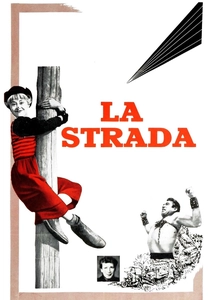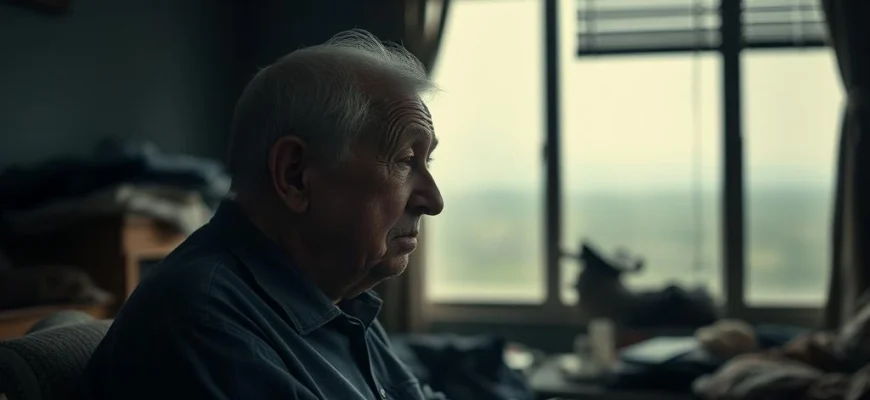If you were moved by the poignant realism and emotional depth of 'Umberto D.' (1952), you'll love these 10 similar films and shows that capture the same heartfelt storytelling and human struggles. This article is perfect for fans of Italian neorealism or anyone seeking deeply affecting cinema that reflects life's raw beauty and hardships.

Rome, Open City (1945)
Description: A groundbreaking neorealist film that captures the resilience of ordinary people under oppressive conditions. Its unflinching depiction of hardship and human dignity resonates deeply.
Fact: The film was shot in secret during the Nazi occupation of Rome, using leftover film stock and often improvising scenes due to the dangerous circumstances.
 Watch Now
Watch Now 
Bicycle Thieves (1948)
Description: A poignant portrayal of post-war poverty and desperation, focusing on the struggles of an ordinary man trying to survive in a harsh economic landscape. The film's neorealist style emphasizes raw emotion and social commentary.
Fact: The film was shot on location in Rome using non-professional actors, which added to its authentic and gritty feel. It won an Honorary Academy Award before the Best Foreign Language Film category existed.
 Watch Now
Watch Now 
Miracle in Milan (1951)
Description: A blend of neorealism and whimsical fantasy, this film contrasts the harsh realities of poverty with moments of magical hope. Its focus on community and resilience is deeply moving.
Fact: The film's surreal ending, featuring a flight of brooms, was achieved using simple special effects and remains one of the most memorable sequences in Italian cinema.
 Watch Now
Watch Now 
La Strada (1954)
Description: A melancholic exploration of loneliness and the human condition, told through the journey of a simple-minded woman and a brutish circus strongman. The film's emotional depth and poetic realism are striking.
Fact: The film's iconic score by Nino Rota became one of the most recognizable in cinema history. It won the first Academy Award for Best Foreign Language Film.
 Watch Now
Watch Now 
The Cranes Are Flying (1957)
Description: A visually stunning and emotionally wrenching war drama that focuses on the personal toll of conflict. Its poetic realism and emphasis on human suffering are deeply affecting.
Fact: The film's innovative cinematography, including handheld camera work and unconventional angles, broke new ground in Soviet cinema. It won the Palme d'Or at Cannes.
 Watch Now
Watch Now 
The Leopard (1963)
Description: A sweeping yet intimate epic about the decline of aristocracy and the rise of modernity. Its themes of change and loss are rendered with profound emotional resonance.
Fact: The film's grand ball sequence, lasting nearly 45 minutes, is considered one of the most lavish and meticulously choreographed scenes in cinema history.
 Watch Now
Watch Now 
The Battle of Algiers (1966)
Description: A gripping, documentary-like portrayal of urban guerrilla warfare and colonial oppression. Its unflinching realism and moral complexity make it a powerful social commentary.
Fact: The film was banned in France for several years due to its controversial depiction of the Algerian War. It was later screened at the Pentagon as a case study in counterinsurgency.
 Watch Now
Watch Now 
The Shop on Main Street (1965)
Description: A heartbreaking story of moral conflict and complicity during the Holocaust, centered on an ordinary man's relationship with a Jewish widow. Its emotional depth and ethical dilemmas are profoundly moving.
Fact: The film was the first Czechoslovak movie to win the Academy Award for Best Foreign Language Film. Its ending is one of the most haunting in cinema history.
 Watch Now
Watch Now 
Germany, Year Zero (1948)
Description: A harrowing depiction of a child's struggle to survive in the ruins of post-war Berlin. The film's stark realism and emotional weight highlight the devastating impact of war on the innocent.
Fact: The film was shot in the actual ruins of Berlin, with many scenes featuring real homeless children who had been affected by the war.
 Watch Now
Watch Now 
The Roof (1956)
Description: A tender yet urgent story about a young couple's fight to secure a home in post-war Rome. The film's focus on everyday struggles and social injustice is deeply humanistic.
Fact: The film was inspired by real-life housing crises in Italy, and its climax was shot in a single, uninterrupted take to heighten the tension.
 Watch Now
Watch Now 








